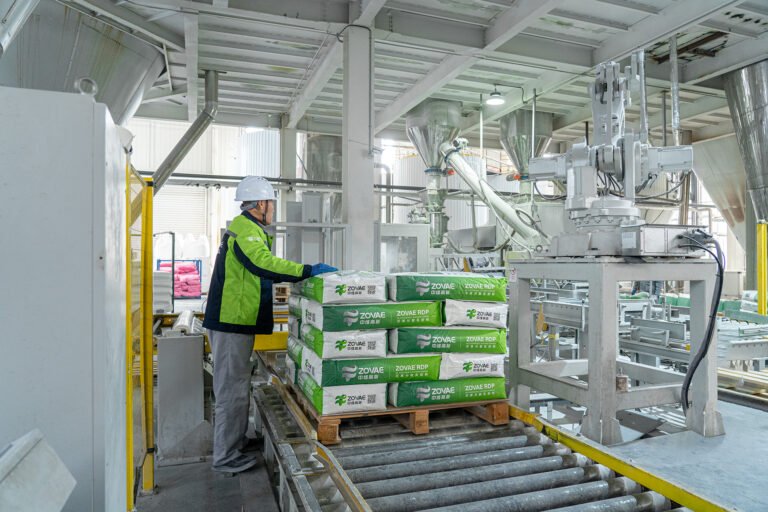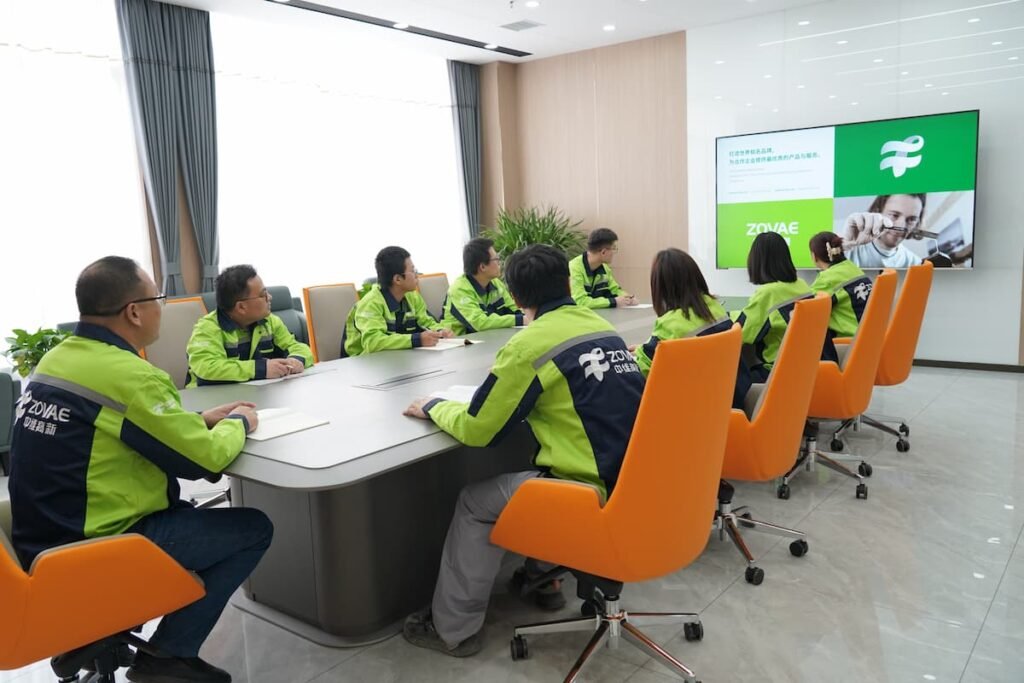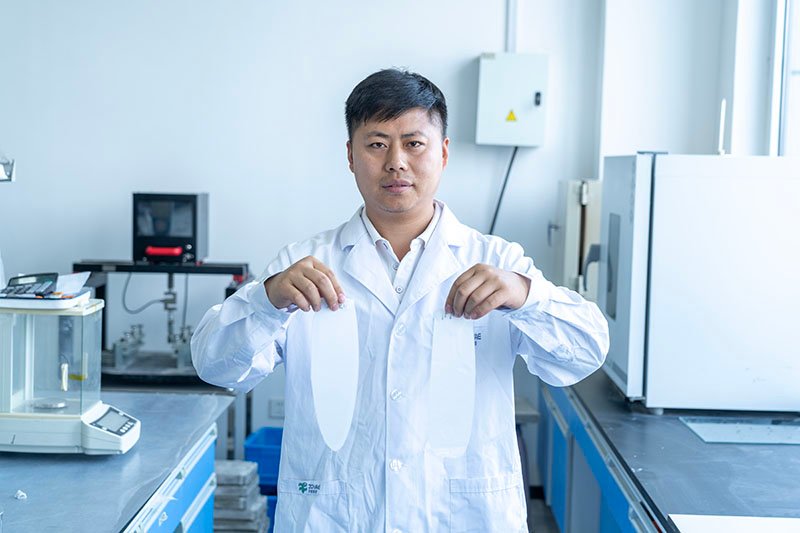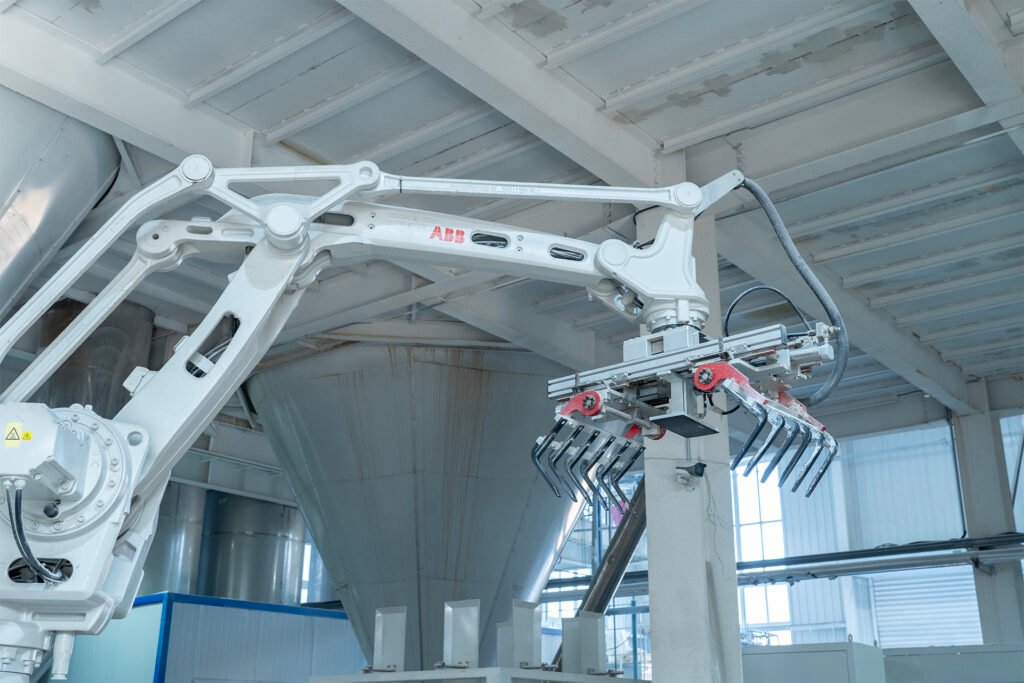Zovae superplasticizers, classified as high-range water-reducing admixtures (HRWR), are meticulously engineered to revolutionize the rheology of fresh concrete while significantly enhancing its hardened-state attributes. Through the dispersion of cement agglomerates, reduction of yield stress and plastic viscosity, and stabilization of the particle matrix, Zovae facilitates achieving identical slump or slump-flow levels with considerably less water. This results in a cascade of quantifiable benefits: a denser microstructure, elevated early and 28-day compressive strengths, superior pumpability and surface finish, diminished drying shrinkage, and a marked reduction in cracking throughout the concrete’s lifespan. This comprehensive article elaborates on the five pivotal functions of Zovae superplasticizers—reducing the water-cement ratio, enhancing concrete fluidity, improving workability and placement, increasing compressive strength, and minimizing shrinkage and cracking—offering a detailed, field-focused guide. Within these pages, you will uncover the underlying mechanisms (the “why”), practical application methods (the “how”), suitable project contexts (the “where”), and critical considerations (such as quality control, troubleshooting, and climate-specific logistics). The objective is clear: to empower specifiers, producers, and contractors to translate Zovae’s chemical innovations into consistent, replicable results on the jobsite.
How has the advent of superplasticizers shifted the paradigm of concrete construction? In an era striving for efficiency, sustainability, and resilience, Zovae stands as a cornerstone, enabling concrete formulations that exceed traditional limitations and meet modern demands with precision.
How Zovae Superplasticizers Work: A Concise Primer
Before exploring each specific function, it’s essential to bridge the gap between molecular behavior and tangible performance outcomes, providing a foundational understanding of Zovae’s transformative impact.
Cement Flocculation and “Dead Water” : In unmodified concrete mixes, opposing ionic charges and van der Waals forces cause cement grains to clump into flocs, trapping water within these agglomerates. This “dead” water fails to contribute to flow, increasing yield stress and plastic viscosity, rendering the mix rigid or unmanageable at lower water contents.
Adsorption and Dispersion: Zovae superplasticizers adhere to cement particle surfaces through adsorption. Depending on the chemical family, dispersion occurs via electrostatic repulsion (as seen in naphthalene or melamine condensates like SNF and SMF) and/or steric hindrance (as with polycarboxylate ethers, or PCE, featuring comb-like side chains). In either mechanism, particles are separated and kept apart, liberating the trapped water for effective use.
Rheology Shift: With flocs dismantled, yield stress plummets, and plastic viscosity diminishes. The fresh concrete transitions from a resistant “gel” state to a fluid suspension that consolidates with minimal energy input. This explains why Zovae achieves comparable slump with reduced water—or delivers significantly greater flow at unchanged water levels.
Hydration Efficiency and Microstructure: Particle separation fosters uniform hydration, preventing localized under- or over-hydration zones, while decreased water content curtails capillary porosity and refines pore size distribution. The result is a hardened matrix that is denser, stronger, and less permeable to aggressive agents.
With this conceptual framework, the five functions detailed below are not standalone benefits but interconnected results of Zovae’s core capability to control dispersion and rheology. Their synergy redefines what’s possible in concrete performance, from batching to decades of service.
1) Reduce the Water–Cement Ratio
What It Means in Practice
The water-cement ratio (w/c) is the paramount factor dictating concrete performance. Reducing w/c while preserving workability is the most direct route to enhanced strength and durability. Zovae superplasticizers accomplish this by disintegrating cement flocs and releasing water otherwise immobilized within agglomerates. Practically speaking, this allows targeting the same slump with 20–35% less water (depending on mix design) or maintaining water levels to achieve greater slump/slump-flow for challenging placements.
Why It Matters
- Strength Scaling: Compressive strength inversely correlates with w/c. Even a slight reduction can yield substantial strength gains, both early (1–3 days) and at 28 days, enabling structural designs with reduced material or enhanced capacity.
- Durability: A lower w/c minimizes capillary porosity, bolstering resistance to chloride penetration, carbonation, sulfate attack, and freeze–thaw degradation—critical for infrastructure in harsh environments.
- Finish and Rework: Decreased bleed and segregation at a given workability result in cleaner surfaces, fewer surface defects, and reduced patching needs, saving time and resources.
How to Optimize This Function
- Select the Optimal Chemistry: Choose Zovae grades based on material profiles and project goals. For significant water reductions and prolonged slump retention (as in SCC, long-haul ready-mix, or UHPC), polycarboxylate ether (PCE) grades with tailored side-chain structures excel. For budget-conscious mixes with moderate retention needs, sulfonated naphthalene formaldehyde (SNF) or sulfonated melamine formaldehyde (SMF) offer effective alternatives.
- Sequence Precisely: Introduce Zovae superplasticizer with the final portion of mixing water or shortly post-initial wetting for maximum impact. In multi-admixture scenarios, dose air-entraining agents (AEA) first, followed by Zovae, then set modifiers like accelerators or retarders.
- Implement Split Dosing: For extended transport times or hot weather, employ split dosing—typically 60–80% at the batch plant and the remainder on-site—to refresh slump without risking overdose.
- Manage Temperature: High concrete temperatures exacerbate slump loss and performance variability. Utilize chilled water, shade aggregates, and minimize truck dwell times to maintain consistency.
Quality Control Checkpoints
- Fresh Concrete: Monitor slump or slump-flow with retention curves over time; measure unit weight and air content; track temperature; assess visual stability (especially for SCC).
- Hardened Concrete: Test 1-, 3-, 7-, and 28-day compressive strengths; evaluate surface absorbance or resistivity as a durability proxy when specified by project requirements.
Common Pitfalls and Fixes
- Under-Dispersion at Low Dosage: Ensure the dosage aligns with cement and fines content. Fine-rich mixes often demand higher ends of the dosage spectrum for adequate dispersion.
- Over-Reliance on Water Reduction: If the mix turns harsh or unworkable, re-evaluate aggregate grading or incorporate a light viscosity-modifying admixture (VMA) to stabilize at reduced w/c ratios without compromising flow.
2) Enhance Concrete Fluidity
What It Means in Practice
Fluidity extends beyond mere high slump values; it encompasses controlled, cohesive flow with reliable passing ability and minimal segregation. Zovae diminishes yield stress (the initial force needed to start flow) and plastic viscosity (resistance during flow), producing “silky” mixes that pump effortlessly, navigate dense reinforcement, and self-consolidate when designed for such applications like SCC.
Why It Matters
- Pumpability and Pressure Stability: Reduced viscosity under shear ensures consistent pump pressures and lowers the likelihood of line blockages, critical for high-rise or long-distance pumping.
- Passing Ability: In SCC, optimized rheology allows the mix to maneuver through tight rebar configurations without blocking or segregating, ensuring uniform consolidation.
- Finish Quality: Smooth, controlled flow paired with managed air/microfoam reduces bugholes and surface tears, enhancing aesthetic and functional outcomes.
How to Optimize This Function
- Match Zovae Grade to Rheology Needs: Select fast-fluidizing grades for immediate high flow demands or retention grades for sustained fluidity over extended windows, such as in ready-mix logistics under varying haul times.
- Balance Fines and VMA: For SCC or high-flow mixes, a light VMA prevents segregation at elevated slump-flow levels. Insufficient VMA risks bleeding or segregation; excess VMA can reintroduce stickiness, counteracting fluidity gains.
- Pair with Compatible Defoamer: Microfoam increases apparent viscosity and mars finishes. Ensure defoamers are compatible with the chosen Zovae superplasticizer to maintain clean flow characteristics.
- Validate Passing Ability: For SCC applications, employ standard tests like J-ring, L-box, or local equivalents to confirm that fluidity remains cohesive and does not lead to segregation under field conditions.
Quality Control Checkpoints
- Fresh Concrete: Assess slump-flow diameter and T500 (time to 500 mm spread) for SCC; evaluate visual stability index; log pump pressure for long lines; measure air content and unit weight.
- Hardened Concrete: Inspect surface quality for bugholes or honeycombing; verify dimensional tolerances for precast elements to ensure flow did not compromise precision.
Common Pitfalls and Fixes
- “Greasy” Flow with Segregation: Slightly reduce Zovae dosage and introduce a VMA; reassess fines content and grading curve to restore cohesive flow.
- High Air Creating Spongy Texture: Switch to a compatible defoamer and recalibrate air-entrainer dosage after finalizing Zovae levels to prevent unintended air elevation.
3) Improve Workability and Placement Performance
What It Means in Practice
Workability defines the overall ease of mixing, placing, consolidating, and finishing concrete. Zovae enhances plasticity (the capacity to deform without breaking apart) and cohesiveness (resistance to segregation during handling), cutting the energy needed for vibration and yielding smoother, more consistent surfaces.
Why It Matters
- Labor and Time Efficiency: Superior workability reduces troweling effort, vibration duration, and rework, directly boosting productivity on-site or in-plant.
- Consistency Across Batches: Cohesive mixes are less susceptible to minor fluctuations in water or aggregate moisture, ensuring reliable placements batch after batch.
- Safety and Structural Integrity: Lower vibration requirements reduce operator fatigue and noise exposure while minimizing honeycombing risks that compromise structural soundness.
How to Optimize This Function
- Tune Viscosity Modifiers in Mortar/SLU Systems: For flowable mortars and self-leveling underlayments (SLU), fine adjustments to cellulose or other viscosity agents significantly affect “feel” and finishing ease.
- Calibrate Air System Post-Zovae Selection: Superplasticizers interact with air-entraining admixtures (AEAs); adjust AEA dosage after setting Zovae levels to hit targeted air content and spacing.
- Monitor Mixing Energy: Excessive late-stage shear can introduce micro-air and disrupt dispersion; insufficient shear might leave clumps, causing uneven workability—standardize energy input for consistency.
- Control Evaporation: In hot, dry, or windy environments, manage evaporation using windbreaks, misting, or curing compounds where permitted to prevent surface crusting that hampers finishing.
Quality Control Checkpoints
- Fresh Concrete: Measure slump or spread; assess edge stability post-screeding; rate finishability in trials; record time to final set under project-specific conditions.
- Hardened Concrete: Evaluate surface uniformity; test bond strength to overlays for topping or repair applications to ensure placement led to robust integration.
Common Pitfalls and Fixes
- Harsh, Sandy Feel During Placement: Enhance fines distribution or add minimal well-graded filler; confirm Zovae dosage isn’t too low for target flow, as under-dosing can compromise plasticity.
- Sticky, Reluctant Finish: Consider switching to a different Zovae grade or reducing VMA slightly; ensure defoamer addition isn’t delayed, as late dosing can elevate apparent viscosity and hinder finishing.
4) Increase Compressive Strength
What It Means in Practice
Strength improvement is a direct benefit of lowering w/c while maintaining workability. Zovae enables formulators to target higher early (1–3 day) and 28-day strengths or to meet existing strength specs with reduced cement and increased SCMs, aligning with both performance and sustainability objectives.
Why It Matters
- Structural Capacity: Elevated strength allows for longer spans, thinner sections, or greater load-bearing capacity, optimizing design flexibility.
- Precast Productivity: Faster early strength gain accelerates demolding, enhancing plant throughput and reducing turnaround times.
- Durability Assurance: Strength improvements often correlate with a denser microstructure, indirectly enhancing durability against environmental aggressors.
How to Optimize This Function
- Select Strength-Oriented Zovae Grades: Opt for grades with potent initial dispersion for early strength demands (e.g., in precast). Pair with accelerators if climate or cement chemistry delays set.
- Deliberately Lower Total Water: Don’t solely depend on Zovae to achieve reduction passively; recalculate target batch water to lock in strength gains actively.
- Leverage SCMs for Late Strength: Materials like slag, fly ash, silica fume, and calcined clays enhance long-term strength and durability at lower w/c; select Zovae grades compatible with SCMs for optimal retention.
- Ensure Proper Curing: Even the best mix requires adequate curing to realize designed strengths—manage moisture and temperature post-placement to avoid early-age deficits.
Quality Control Checkpoints
- Fresh Concrete: Check unit weight and air content for stability; control mix temperature to avoid variability.
- Hardened Concrete: Measure compressive strength at specified ages (e.g., 1, 3, 7, 28 days); assess modulus if relevant; employ maturity modeling for early demolding decisions in precast settings.
Common Pitfalls and Fixes
- Strength Variability Across Batches: Often linked to inconsistent water content. Enforce strict water measurement, monitor aggregate moisture fluctuations, and standardize Zovae addition timing for uniformity.
- Slower Early Strength at Low Temperatures: Select a Zovae grade with minimal set-delay impact, incorporate a compatible accelerator, or pre-warm materials to mitigate cold-weather slowdowns.
5) Minimize Shrinkage and Cracking
What It Means in Practice
Shrinkage—whether plastic, autogenous, or drying—induces tensile stresses that can manifest as microcracks or visible fractures. Zovae curtails excess water, refines pore structure, and optimizes internal particle packing, collectively reducing shrinkage potential and crack initiation risks.
Why It Matters
- Serviceability: Fewer and finer cracks enhance aesthetics and lower maintenance costs, especially crucial for floors, facades, and exposed elements.
- Durability: Cracks serve as conduits for moisture and deleterious ions; minimizing them safeguards reinforcement and extends service life, particularly in harsh exposures.
- Dimensional Stability: Essential for precast fit-up, industrial slabs, and overlays where precise tolerances are non-negotiable for performance and safety.
How to Optimize This Function
- Reduce Evaporation Risk: Implement climate-appropriate curing practices; use evaporation retarders where allowed. Zovae’s enhanced flow facilitates quicker finishing, potentially reducing plastic shrinkage risks when paired with timely curing.
- Favor Well-Graded Aggregates and Balanced Paste: An optimized aggregate skeleton lowers total shrinkage potential; Zovae’s dispersion capability allows reduced paste content, further mitigating deformation.
- Consider Complementary Additives: For specs demanding ultra-low shrinkage, pair Zovae with shrinkage-reducing admixtures or fibers; confirm compatibility through trial mixes.
- Manage Heat of Hydration: In massive sections or hot climates, temper hydration heat rise to limit thermal gradients that exacerbate cracking—consider cooling strategies or low-heat cements.
Quality Control Checkpoints
- Fresh Concrete: Calculate evaporation rate versus bleed rate; observe surface conditions in initial hours for plastic cracking signs.
- Hardened Concrete: Conduct drying shrinkage measurements if specified; map cracks on slabs/panels at 24–72 hours to quantify early performance.
Common Pitfalls and Fixes
- Plastic Shrinkage Cracking in Hot, Windy Conditions: Erect windbreaks, apply fogging, or initiate curing earlier; avoid prolonged finishing delays; ensure defoamer choice doesn’t eliminate beneficial bleed in slabs reliant on surface moisture.
- Autogenous Shrinkage in Low w/c Systems: Explore internal curing with lightweight fines or use a shrinkage-reducing admixture; uphold rigorous curing to combat self-desiccation.
Formulation and Dosage Guidance (Practical Starting Points)
Dosage is denoted as a percent of total binder (cement + SCMs) by mass, as supplied. Validation through lab trials and field panels is imperative.
- Ready-Mix Structural Concrete: PCE 0.20–1.00%; SNF/SMF 0.40–1.50%, varying with cement chemistry and desired slump/retention.
- Self-Compacting Concrete (SCC) : PCE 0.60–2.00%, based on powder content and target slump-flow. Supplement with light VMA for high-flow stability.
- Precast/High-Early: Fast-acting PCE or SMF 0.40–1.20%. Combine with accelerator if ambient temperatures are low or cycles tight.
- Long-Distance Pumping/High-Rise: Retention-grade PCE 0.40–1.20% with split dosing and thermal management.
- Grouts/Precision Grouting: PCE 0.40–1.20% with optimized fines; track bleed and setting profiles.
- Mortars/Self-Leveling Underlayments (SLU) : PCE 0.10–0.40% for many formulations, aligned with viscosity control and defoamer use.
Sequencing and Mixing Tips
- Dose air-entrainer first to set bubble nuclei, followed by Zovae superplasticizer, then accelerators/retarders as required.
- Avoid direct Zovae addition to dry cement; blend with the final water portion or into the wet mortar stream for uniform dispersion.
- Standardize mixing energy and duration; shear variations impact air content, dispersion efficacy, and apparent viscosity.
Compatibility and Synergy
- Air-Entraining Admixtures (AEA) : Zovae alters AEA efficacy. Post-Zovae selection, titrate AEA to target air totals and confirm spacing for freeze–thaw durability.
- Viscosity-Modifying Admixtures (VMA) : Crucial for SCC to avert segregation at high flow. Apply sparingly to prevent a “gummy” texture.
- Defoamers: Select products pre-tested with your Zovae grade; mismatches cause pinholes or destabilize air content.
- Set Modifiers: Align accelerators/retarders with climate and timelines; ensure they don’t undermine slump retention or cause unexpected air shifts.
- SCMs and Fines: Fly ash, slag, silica fume, and calcined clays significantly influence water demand and adsorption. Zovae offers clay-tolerant PCE variants for reactive fines; early screening is advised.
Climate and Logistics Playbook
- Hot Weather: Anticipate accelerated slump loss. Choose retention-grade Zovae, split dose, and use cooled materials; reduce truck dwell times.
- Cold Weather: Certain superplasticizers may delay set at low temperatures. Opt for an appropriate Zovae grade, consider accelerators, and warm materials if feasible.
- Long Hauls/Traffic Delays: Pre-plan split dosing (e.g., 70% at plant, 30% on-site); log haul durations and ambient conditions to align with slump retention curves.
- Windy/Dry Conditions: Mitigate evaporation to curb plastic shrinkage risks. Zovae’s faster finishing helps, but does not replace, proper curing measures.
Quality Control Program (From Plant to Placement)
- Incoming Materials: Monitor cement alkalis/C3A variability, SCM fineness, aggregate moisture; record Zovae product temperature and solids if relevant.
- Batching: Calibrate liquid meters/scales; enforce water addition discipline; document Zovae sequence and timing.
- Fresh Concrete Tests: Track slump/slump-flow with retention curves, unit weight/air, temperature, bleed/segregation (as needed), and passing metrics for SCC.
- Hardened Concrete Tests: Assess early and 28-day compressive strength; evaluate durability per spec (resistivity, chloride migration, freeze–thaw scaling); score precast surface quality.
- Data Feedback: Plot critical-to-quality (CTQ) metrics against Zovae dosage and temperature; use trend charts for early drift detection.
Troubleshooting Guide (Symptoms → Likely Causes → Corrective Actions)
- Rapid Slump Loss
- Causes: Non-retentive grade; high temperature; long dwell; reactive fines.
- Actions: Switch to retention-grade Zovae; split dose; cool materials; shorten transport-to-placement gap.
- Sticky Mix at Target Slump
- Causes: Overdose relative to fines; incompatible defoamer; excessive VMA; poor grading.
- Actions: Reduce Zovae dose slightly; change defoamer; trim VMA; refine gradation.
- Segregation/Bleed at High Flow
- Causes: Insufficient fines or VMA; excessive water for chosen flow; inadequate paste stability.
- Actions: Add light VMA; adjust fines curve; recalibrate target water with same Zovae dose.
- Low Early Strength
- Causes: Set delay from admixture/SCM interaction; cold materials; high air.
- Actions: Choose faster Zovae grade; add compatible accelerator; warm materials; recalibrate AEA.
- Air Outside Target
- Causes: AEA/Zovae interaction; shear variability; defoamer effects.
- Actions: Re-establish AEA post-Zovae fix; standardize mixing energy; review defoamer type/timing.
- Pump Pressure Spikes
- Causes: Inconsistent rheology; line segregation; temperature swing.
- Actions: Verify batch consistency; prime lines properly; adjust VMA; manage temperature.
- Finish Defects (Tearing, Bugholes)
- Causes: Microfoam; overworked surface; fast evaporation.
- Actions: Optimize defoamer; refine finishing sequence; control wind/sun; apply curing measures if allowed.
Application Snapshots
- High-Rise Pumped Concrete: A retention-grade Zovae PCE with split dosing maintained slump through a 40-story pump, curbing pressure spikes and negating on-site retempering needs.
- SCC for Dense Rebar: Zovae PCE with light VMA achieved 680–700 mm slump-flow with stable T500 times, passing J-ring without blocking, delivering a pristine architectural finish.
- Precast Beams: A fast-acting Zovae grade enabled earlier demolding at ambient temperature, streamlining production cycles while upholding surface quality standards.
Sustainability and Cost-in-Use
- Cement Optimization and SCM Leverage: Lower w/c via Zovae permits higher SCM incorporation while meeting strength/durability, reducing clinker use and embodied carbon.
- Fewer Defects and Rework: Cohesive flow and superior finish cut patching, grinding, and rejects, conserving material and labor costs.
- Energy Savings: Reduced vibration energy and quicker finishing lower onsite energy consumption and labor exposure risks.
- Total Installed Cost: While superplasticizers add admixture expense, net cost per cubic meter often decreases due to cement savings, throughput gains (precast), and diminished rework/maintenance over time.
Safety, Handling, and Storage
- Storage: Seal containers; protect from freezing/excessive heat. Mix gently pre-use—some products are shear-sensitive.
- Materials of Construction: Use compatible plastics/stainless steel for storage/dosing; avoid reactive metals.
- Handling: Don’t premix Zovae neat with other admixtures unless validated; dose separately into water stream.
- EHS: Adhere to Safety Data Sheet for PPE/first-aid. Train operators on precise dosing/sequencing to avoid off-spec batches.
Implementation Roadmap
- Define Performance Targets: Slump/slump-flow & retention; pumpability/passing; early & 28-day strengths; air; durability metrics; finish goals.
- Screen Candidates: Test 2-3 Zovae grades (e.g., retention-grade PCE, clay-tolerant PCE for reactive fines, SNF baseline for cost) at 3 dosages across temperature/SCM ranges.
- Simulate Field Conditions: Use hot/cold boxes; test jobsite aggregate moisture; replicate haul times; assess mockups with real formwork/reinforcement density.
- Lock SOPs: Set addition timing, split dosing, mixing energy/duration, QC points, data logging. Calibrate metering.
- Scale Up and Monitor: Pilot at plant scale; track CTQs (slump retention curve, weight/air, T500 for SCC, early strength, finish). Record ambient/mix temperatures.
- Iterate: Adjust Zovae grade/dose, air system, VMA, set modifiers to stay in window. Document changes/outcomes for learning.





